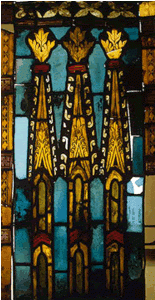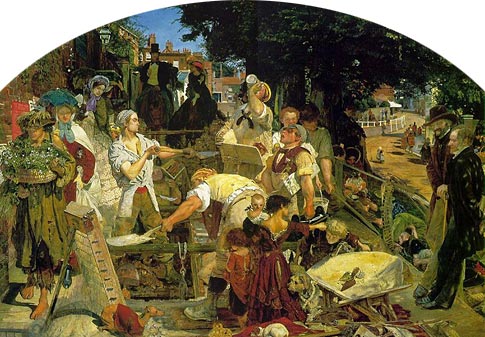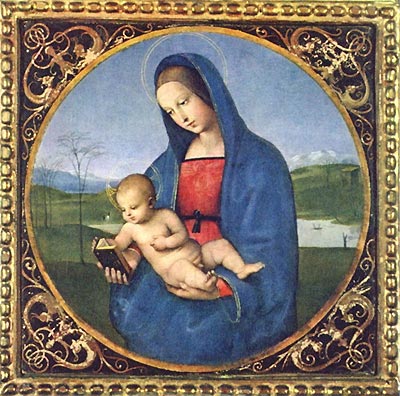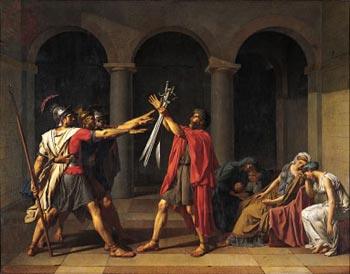Gothic
 Stained glass window, fragment with architectural ornament. Colored glass, painting, lead. Germany. Late 14th century. The Gothic style is an artistic style that was the final stage in the development of the Middle Ages of art of the countries of Western, Central and partially Eastern Europe (between the mid 12th and 16th centuries). The term “Gothic” was introduced into the Renaissance as a derogatory designation of all medieval art, which was considered “barbaric”. From the beginning of the 19th century, when the term Romanesque was adopted for art, the chronological framework of the Gothic style was limited, it marked the early, mature (high) and late phases.
Stained glass window, fragment with architectural ornament. Colored glass, painting, lead. Germany. Late 14th century. The Gothic style is an artistic style that was the final stage in the development of the Middle Ages of art of the countries of Western, Central and partially Eastern Europe (between the mid 12th and 16th centuries). The term “Gothic” was introduced into the Renaissance as a derogatory designation of all medieval art, which was considered “barbaric”. From the beginning of the 19th century, when the term Romanesque was adopted for art, the chronological framework of the Gothic style was limited, it marked the early, mature (high) and late phases.
Gothic developed in countries dominated by the Catholic Church, and under its auspices of the feudal church foundations were preserved in the ideology and culture of the Gothic era. Gothic art remained predominantly religious and religious in its themes: it was correlated with eternity, with the “highest” irrational forces.
Gothic is characterized by a symbolic – allegorical type of thinking and a convention of artistic language. From the Romanesque Gothic style inherited the primacy of architecture in the arts and traditional types of cultures, buildings. A special place in the art of Gothic took the Cathedral – the highest example of the synthesis of architecture, sculpture and painting (mainly stained glass). The space of the cathedral, incommensurable with man, the verticalism of its towers and vaults, the subordination of sculpture to the rhythms of the dynamism of architecture, the multicolor shine of stained glass windows had a strong emotional impact on believers.
Gothic was born in the northern part of France (Ilde-France) in the middle of the 12th century. and flourished in the first half of the 13th century. Stone Gothic cathedrals in France received its classical form. Their high and spacious interior is illuminated by the color shimmer of stained glass windows. The impression of uncontrollable movement upwards and towards the altar is created by rows of slender pillars, a powerful rise of pointed pointed arches, and a fast rhythm of arcades of the upper gallery (triforium). Due to the contrast of the high main and semi-dark side aisles, a picturesque richness of aspects arises, a feeling of infinity of space.
The facades of the cathedrals vary arched arches and rich architectural and plastic decorations, details – patterned vimpergi, phials, crabs, etc. the capitals of the columns form an integral symbolic plot system, which includes the characters and episodes of Scripture, allegorical images. The best works of Gothic plastics – the decor, the statues of the facades of the cathedrals in Chartres, Reims, Amiens, and Strasbourg are imbued with spiritualized beauty, sincerity, and nobility.
In late Gothic, in France, sculptural altars in the interiors became widespread, combining wooden painted and gilded sculpture and tempera painting on wooden boards. A new emotional structure of images has emerged, characterized by dramatic (often exalted) expression, especially in scenes of the sufferings of Christ and the saints. Among the best examples of French Gothic art are small ivory sculptures, silver reliquaries, Limoges enamel, tapestries and carved furniture.
The late (“flaming”) Gothic is characterized by a capricious, window-shaped pattern resembling flames (c. Saint-Macloo in Rouen). There were paintings on secular subjects (in the papal palace in Avignon, 14-15 centuries).


